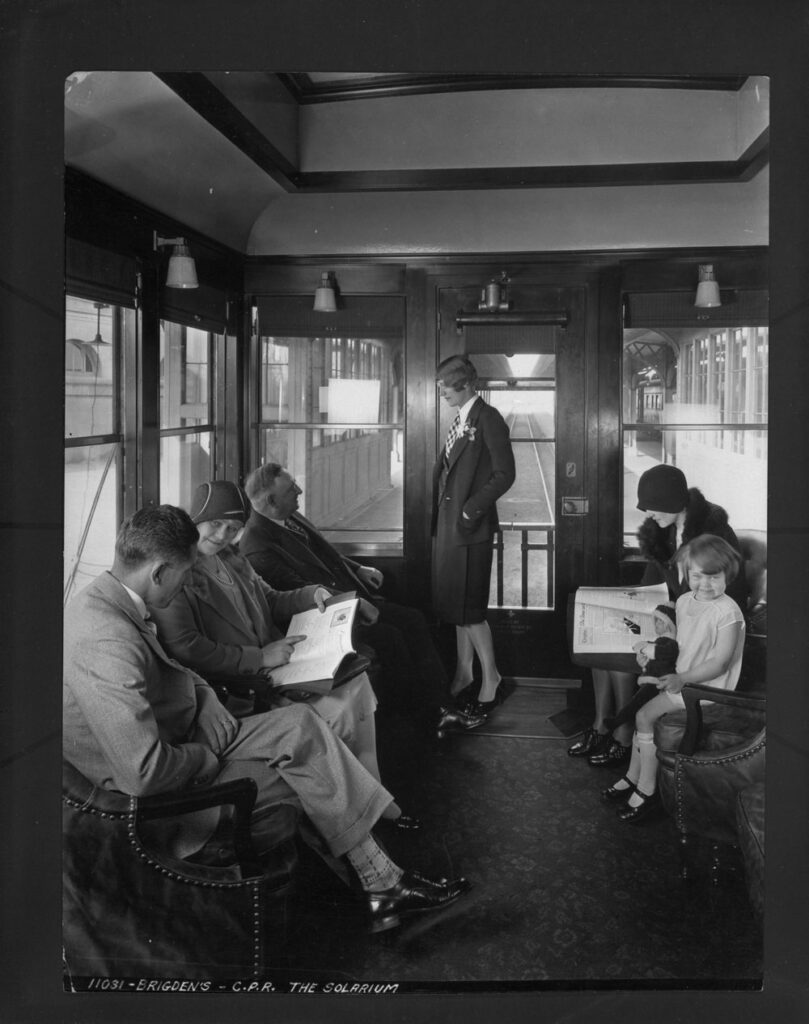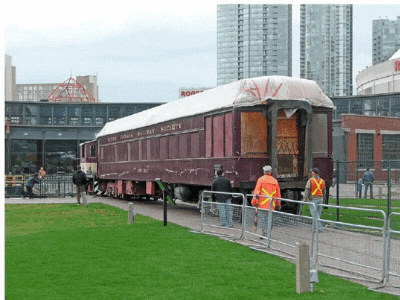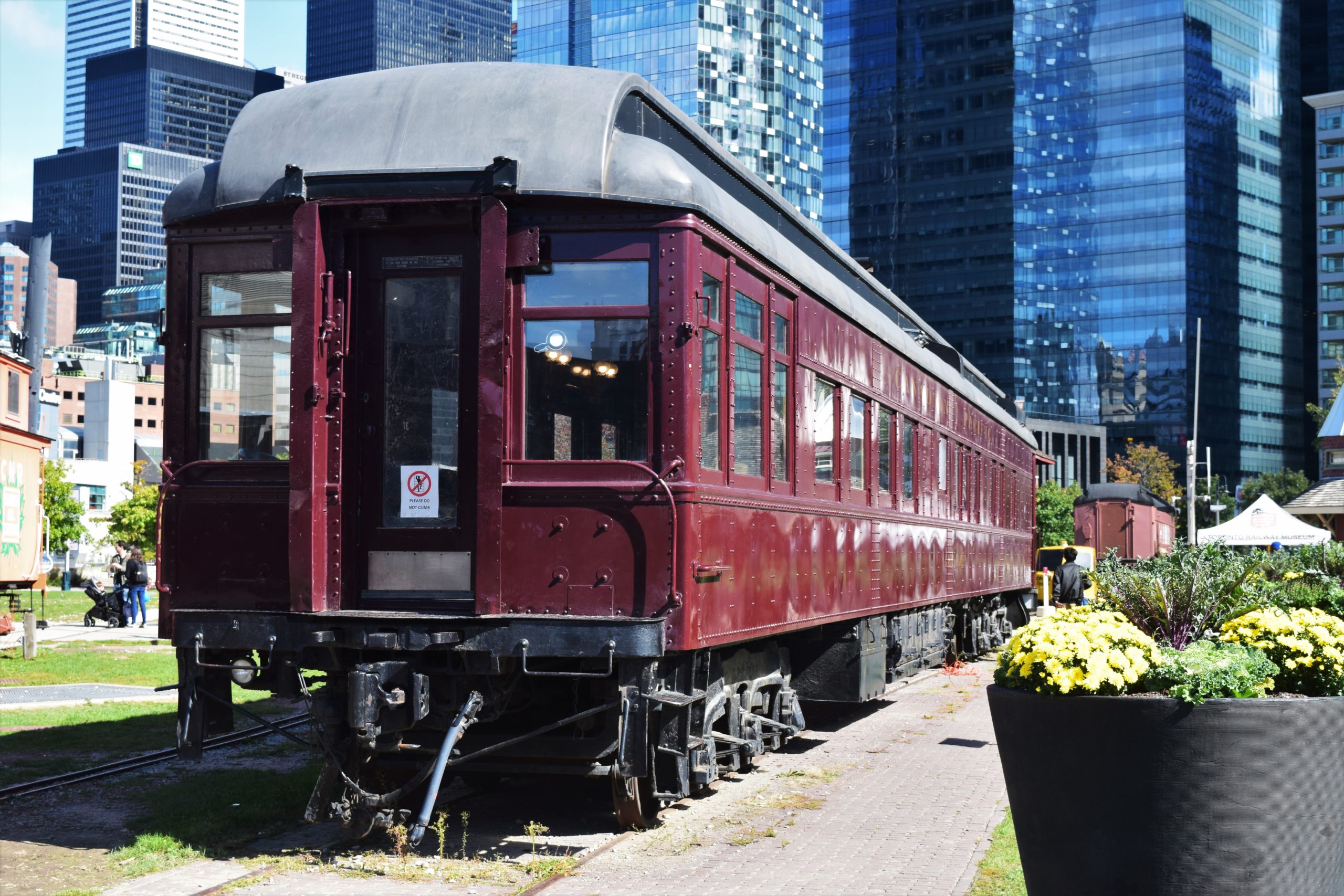Our hardworking volunteers are working to restore this heritage railway car. Much restoration has already been completed to make Cape Race safe to enter, but the passenger compartment areas still require some work. When this phase of restoration is complete, visitors will be able to see both the daytime seating and nighttime configuration of the beds and berths. This will be especially of interest to school groups visiting the museum as very few young people would have experienced overnight railway travel.
Click here to donate today.
A Short History of Cape Race
Cape Race was a passenger car serving long-distance trains for the Canadian Pacific Railway (CPR). The history of the Cape Race is somewhat complex and the car has had different names throughout its life. To get an understanding of this history, we need to look back to passenger rail travel in the 1920s. Today, CPR and CN only operate freight services. In the 1920s, the CPR and its rival Canadian National Railways (CNR) operated many intercity passenger services. The last car on these trains was a lounge-observation car with a small, open-air platform at the rear. From there, passenger could enjoy fresh air and stunning views of the landscape.
In 1928, CPR ordered fifteen River cars that were delivered the following year. Being fully enclosed, the indoor space would offer great views even in poor weather. The River cars were built by the National Steel Car Company in Hamilton, Ontario costing $66,200 each at the time.



The River cars featured many luxurious amenities for first class passengers. The outdoor platform was replaced by a solarium with Vita-Glass windows. There was also an observation parlor and a small kitchen used by staff. There were two smoking rooms and in a bid to increase the number of women travelers, a separate women’s lounge was built. Rare for Canadian trains, there were also a set of separate men’s and women’s showers. Use of these facilities was by appointment and cost 50 cents.
The car we know as Cape Race was at the time known as River Liard named after the river which flows through the Yukon, Northwest Territories, and British Columbia. Due to significant drops in passenger traffic, the River cars were seen as impractical and began to be converted into the Cape series of cars. In 1947, the River Liard became Cape Race. The smoking rooms, women’s lounge, and all showers were removed. In their place the CPR put additional revenue-generating bedrooms. The name Cape Race comes from the geographic location in the southeast corner of Newfoundland.
In the 1960s, there were further changes made to the Cape series of cars, however this was less extensive than the previous reconfiguration. In 1962, Cape Race underwent another name change and was simply referred to as Business Car 13.

After forty years of CPR ownership, Cape Race (known as Car 13) was sold to the Upper Canada Railway Society (UCSR) which was an organization of railway enthusiasts in 1969. In 1990s, Cape Race was moved to the John Street roundhouse before its rail links to the mainline were removed. In 2007, the UCSR formally donated Cape Race to The City of Toronto to be incorporated into a railway museum. During the years it sat abandoned, the car sustained damage due to weather.
Thanks to the hard work of Toronto Railway Museum volunteers, significant restoration was completed in 2014. Specifically, work was done to weather proof Cape Race and allow it to be kept safety outdoors. The car was given a new roof membrane, repairs to the windows were completed, a professional was brought in to paint the exterior. Major metal work was done to prevent rusting for the decades to come.
Why we need your help
There is still much work to be done. The current phase of restoration involves the passenger compartments of Cape Race. Compartment #1 was the Steward’s abode. Compartments #2 and #3 are separate rooms with a divider which allows it to function as a 4-bed unit. Volunteers would like to restore the windows, fans, and berths so visitors can see both the day-time and night-time configuration.

